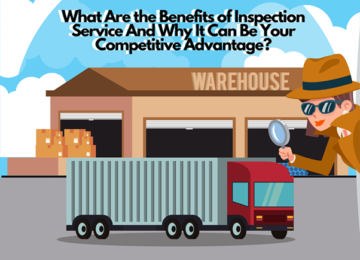Introduction
We cannot deny how much ecommerce has changed everyone’s lives.
Consider how you went shopping twenty years ago. Where did you go to buy groceries? How do you order food from your favourite fast-food chain or restaurant? What did you do when it was time to replace the old furniture in your home?
How you executed all of these is different now due to the advancement of technology. The moment everyone uses the internet, it has made a revolutionary impact on how businesses run.
Since almost all are available online, everyone considers this option to buy what they need instead of in person. According to research from GWI, 58.4% of working-age internet users often shop for something from an ecommerce store at least once a week.
For brick-and-mortar shops, this is an opportunity that they should not miss since it can help them increase their sales. The only way to achieve this is to go digital. Apart from social media platforms, presence on an ecommerce website and effective search engine optimisation (SEO) strategies are necessary. These two factors can further expand customer reach and make your online business more credible.
What Exactly Is Ecommerce?
The term ‘ecommerce’ is a portmanteau word, meaning a combination of words of electronic and commerce, which translates to internet commerce or online commerce since ‘ecommerce’ involves making business transactions over the internet.
For example, WooCommerce and Shopify are the most popular ecommerce platforms in Singapore. Many online retailers use them to sell things online, which people often visit to buy the things they need, whether for personal or business use.
In other words, ecommerce is an online version of a brick-and-mortar shop where you sell or buy products. To help your ecommerce store get discovered by potential customers and transform them into paying loyal customers, you need to have a good understanding of your business. You also need to watch out for ecommerce trends and learn how to optimise them.
The ecommerce industry is continuously growing not only in Singapore but also in the rest of the world. Statista runs a forecast that the global retail ecommerce market will grow up to 7.39 trillion USD by 2025.
That is why it is ideal for brick-and-mortar shops to embrace digitalisation and jump on the bandwagon of the ecommerce industry. Doing so as early as possible will help reap more of what you are going to sow if your brick-and-mortar shop successfully transitions to ecommerce.
Part 1: Importance Of Ecommerce

When the COVID-19 pandemic came, no one was ready for sudden changes. Everyone was forced to adapt. Cities throughout the world were in lockdown, students had to learn their lessons online, and employees had to work from home to avoid getting exposed to virus transmission.
For brick-and-mortar shops, they have to adapt as quickly as possible by reaching out to their customers and making sales by creating an ecommerce website.
These sudden shifts have left many brick-and-mortar shops struggling to stay afloat. Some of them had to close down for good and temporarily, while others went digital to serve their customers and make sales online.
Although that is possible since there are many ecommerce starter kits and online tutorials available that brick-and-mortar shops can rely on, thetransition to ecommerce will cost time, effort, and funds.
Furthermore, completing all of them on your own does not guarantee success. The transition process to ecommerce requires years of experience and excellent skill sets in ecommerce, SEO, and ecommerce website design.
The Advantages That Brick-And-Mortar Shops Can Get From Ecommerce
Since digital transformation is a global trend and a growth factor of the modern economy, transitioning from brick-and-mortar shops to ecommerce will not be easy. You have to plan out and monitor everything from the beginning and beyond.
Transitioning to ecommerce, in any case, has numerous advantages and is an excellent solution for brick-and-mortar shops to grow and support their business operations.

1. Fewer Overhead Costs
If you were to give up your brick-and-mortar shops and completely rely on your ecommerce store, then you would be able to save a big sum of funds.
Instead of paying for rental space and utilities, you can use that budget for your ecommerce store’s operation, like hiring a digital marketing agency in Singapore to help you promote your products online.
2. Helps Go Global
Since everyone has internet access, anyone can stumble upon your ecommerce website even if you are in Singapore. After all, search engines like Google allow you to find anything online from anywhere, regardless of distance and time zone.
The same goes for your potential customers. As long as they type the keywords related to your products or services, your ecommerce website will appear on search engine result pages, and they can click on it and check through your web pages.
3. More Convenient For Customers
Unlike brick-and-mortar shops, ecommerce stores in Singapore are available 24 hours a day, seven days a week, allowing your potential customers to shop whenever they want, regardless of their schedule.
That is why people these days prefer online shopping more than in person since there are no opening hours to catch up with to buy what they need. They can do it either before going to bed, during a commute or while drinking coffee during their coffee break.
4. Give More Marketing Opportunities
Your ecommerce website is one of the most powerful marketing tools you have. Apart from using ecommerce SEO while creating your ecommerce website, you can also implement other SEO strategies.
Pay-per-click advertising, social media marketing, and email marketing are just a few that can help increase the likelihood of getting your ecommerce website discovered by potential customers. If done right, you can draw traffic, gain leads, and make more conversions than your competitors.
5. Scalable
When you have an ecommerce website, you can expand your business without spending so much on rent. After all, to add products or services to your ecommerce website, you only need to include more product categories and pages.
You should also reach out to more potential customers by adding more modes of payment and shipping locations. All of these are possible as long as you continue updating your ecommerce website, from its content to ecommerce web design. Doing so allows you to stay relevant and engage with your potential customers.
The Brief History And Evolution Of Ecommerce
If you look through history, you will discover that ecommerce has been around for decades. The invention of the Electronic Data Interchange in the 1960s began the history of ecommerce. This technology was expected to take the place of mail and faxes by allowing data to be transferred digitally without human intervention.
It was only in 1979 when the concept of online shopping was developed and used, which gave birth to teleshopping. A year before the Internet had become widely available to the public—the Boston Computer Exchange was the first ecommerce company that dominated the ecommerce industry.
The fierce competition in the ecommerce industry began when the first web browser, WorldWideWeb, now called Nexus, was launched, along with other ecommerce platforms like Amazon, eBay, Alibaba, and Shopify years later.
To gain a competitive advantage against your ecommerce store competitors not only in Singapore but the rest of the world, here are the things that ecommerce went through, which led to today’s ecommerce.

Looking through this timeline only proves that the ecommerce we all know today has gone through a lot of challenges. The recent one is still driving the global retail ecommerce sales, and as mentioned above, its growth will continue in years to come.
Types Of Ecommerce Model
There are many types of ecommerce models, and each has its purpose and limitations. Knowing what they are and how they differ from one another might help you choose the best ecommerce model suitable for your brick-and-mortar shop. You will be able to promote your products better.
Listed below are the types of ecommerce models that you need to know and how they work.
1. B2B
B2B is an ecommerce model that refers to a business selling a good or service to another business. For instance, a manufacturer to a supplier, supplier to wholesaler or retailer.
Since B2B is a transaction deal between businesses, it often involves raw materials, software, or a combination of products. If you are a manufacturer with an ecommerce website, you can sell directly to merchants if you use the B2B ecommerce model.
2. B2C
B2C is an acronym that stands for business to consumer. It is the most popular ecommerce model due to its straightforward approach to selling. The process of B2C works when an ecommerce market is what it offers directly to consumers.
For example, if you own an ecommerce website that sells carpet, your direct consumers are homeowners, hotels, restaurants, resorts, and others that need a carpet for their flooring,
ALSO READ: B2B Vs B2C Marketing: What Is The Difference?
3. C2B
Individuals who sell goods and services directly to businesses are under the C2B ecommerce model. Typically, it is an ecommerce website that allows professionals from contractors to freelancers to share their work or services.
Upwork, a freelancing platform that links businesses directly with talent, is one of the most well-known examples of a C2B ecommerce. It works by allowing a business to find the perfect person for the job to help with everything from software development and website creation to content marketing.
4. C2C
Another ecommerce model that most people do not think about is C2C. This acronym stands for consumer-to-consumer, which means consumers selling goods or services directly to other consumers is C2C ecommerce. Third-party websites like eBay, Esty and Craigslist are the ones who facilitate transactions on behalf of buyers and sellers.
Part 2: How To Move From Brick-And-Mortar Shop And Start An Ecommerce Store?
When you move your brick-and-mortar shop to ecommerce in Singapore, make sure you are ready for anything. The process of transitioning your business to an ecommerce store is challenging. It might take a while since you have to exert a lot of effort as you consider several things that can help you manage your ecommerce store.
To help you with your preparation, we listed down all steps you need to go through so your brick-and-mortar shop will have a smooth transition to ecommerce.
6 Steps For Transitioning To Ecommerce

1. Setup Your Online Presence
To successfully move your brick-and-mortar shop to the ecommerce industry, you need to do three things in setting up your online presence: buy a domain name, choose a hosting or ecommerce platform, and create social media.
-
Domain
Make sure when you buy a domain name for your ecommerce store, it should represent your brick-and-mortar store. Doing so should help your existing customers find you online. When they type your exact name on search engines like Google, your ecommerce website will appear.
Since there are many ecommerce stores, chances are the domain name you want to use for your ecommerce store is no longer available. However, there is a solution for that. You can add a suffix at the end.
For example, if you want your ecommerce store to have a domain name ABS.com but it is already taken, you can check if ABCstore.com is available.
Apart from that, you can also add an acronym of the country where you are setting up your ecommerce store, like sg for Singapore. Adding this at the end enables your potential customers to know that you are doing business in Singapore.
-
Ecommerce Platform vs Online Marketplace
When setting up an ecommerce store, you need to choose between an ecommerce platform and an online marketplace. The difference between the two is that the former provides online retailers with various tools and options for managing an ecommerce website of their own.
On the other hand, an online marketplace is where many online retailers sell the products they have to offer on the same platform. That means the online marketplace operator like Qoo10 and Lazada will process transactions between consumers and wholesalers or retailers. They only need to add the products they want to sell on the online store so potential customers will be able to see them in their search conducted in the online marketplace.
ALSO READ: Ecommerce Platform Vs Marketplace: Which Is Better For Small Businesses?
-
Social Media
With the continuous growth of social media, it is only wise to use social media networks like Facebook and Instagram to promote your ecommerce store.
By adding the website url of your ecommerce store on your social media platforms, it will drive traffic to your ecommerce store, which will increase sales.
Your potential customers can also get an update about your products once they follow you on your social media platforms. Whenever you post something, chances are it will show up on their news feed and will receive a notification from your social media page
Apart from Facebook and Instagram, the following are other social media platforms where you can advertise and link your ecommerce store.
- YouTube
- TikTok
2. Set Up Payment Methods
Apart from accepting online payments from customers that will be buying from your ecommerce website, adding several payment methods allows you to reach out to global audiences. That means anyone from across the globe with varying payment means can purchase on your ecommerce website.
When setting up payment methods on your ecommerce website, you must first open an ecommerce account with a payment provider, such as:
- Paypal
- DBS PayLah!
- GrabPay
- Atome
- Stripe
- WorldPay
The problem, however, is that not all of these are compatible with ecommerce platforms. That is why you should confirm with the ecommerce platform where you establish your ecommerce website which payment provider they support so you can start set up the right payment methods. .
3. Partner With A Shipping Provider
The next step is to create a shipment method and select the shipping provider for your ecommerce store in Singapore.
Many ecommerce systems already link with the major shipping providers, while numerous others connect you to all of the different shipping firms and negotiate the best pricing for you.
If you go with another provider, there is usually an application programming interface (API) to connect your store to their system so you can get updates on your orders and pick them up without having to leave your store.
However, you can always do it manually by processing the order and requesting shipment pick-up through the provider’s system, then printing the labels from there.
4. Specify Your Return Policy
Just like when someone walks into your brick-and-mortar shop and asks for a replacement or refund, such a situation will become more prevalent once you have an ecommerce store. Since your potential customers cannot see the product in person, they need reassurance they can return the item if they choose the wrong thing.
To prevent getting fooled by others, you should be clear about how your customers are eligible for returns. Some ecommerce stores in Singaporeonly allow their customers to return the item within a certain number of days.
To do the same, your return policy should state the eligibility criteria for your return policy, such as:
- The turnaround time for returns or replacements
- Define and describe the conditions that they need to meet for you to accept their return or replacement request (e.g. incorrect size or colour)
Doing so will help your potential customers know what to expect when they need to return their purchased item.
To make things easier for your potential customers, create a separate web page where they can read the return policy. You could also add this as a pop up every time someone checks out the product and is about to pay in yourecommerce store in Singapore. Doing so should inform them of what will happen.
5. Implement Ecommerce Marketing
Even if you already have an ecommerce store, that does not guarantee you will be able to make sales right away. To make that happen, you need to drive the traffic to your ecommerce website by promoting your products online, which is where ecommerce marketing comes in.
When it comes to ecommerce marketing, there are many things you need to do. Apart from creating content for your ecommerce website, you also need to tap on search engine optimisation (SEO) by using keywords to make your content appear more on search engine result pages (SERPs). That means when someone types something related to the keywords of products, one of your web pages will appear on SERPs.
Since acquiring organic traffic is hard to achieve, there is another way to drive traffic to your ecommerce website, and that is through search engine marketing (SEM). In this method, you have to bid for your campaign to appear more on SERPs when they have searched for something related online. And every time someone clicks on your SEM campaign on search engines like Google, you will have to pay for it.
6. Determine Manpower Needs
Running an ecommerce store is quite similar to managing a brick-and-mortar since you also need staff to handle some of your affairs. Otherwise, you will have to juggle everything yourself, which is not easy.
With overwhelming tasks coming in your way, getting orders ready, packing them for shipment, and delivery is a lot of work. That is why you should make sure you have all these professionals available to work for your ecommerce store.
- Digital marketing experts
- Graphic designer
- Ecommerce store and social media manager
- Warehouse and shipping personnel
Conclusion
As the number of internet users continues to increase, more brick-and-mortar shops should consider transitioning their business to ecommerce. That is why you should do it now while the competition to attract customers, gain leads, and make conversions is not yet competitive like in the years to come.
If a brick-and-mortar shop starts to embrace digitalisation and create an ecommerce website, the more they would reach out to many customers and show the potential growth of their business. Doing so should also help them expand and increase their online presence.
The same goes for your business, so invest in the transition of your brick-and-mortar shop to ecommerce. If you need help, get in touch with a digital marketing agency. They can help you set up an ecommerce website and implement effective SEO strategies to promote your products online.
Contact OOm now to start the transition of your brick-and-mortar shop to ecommerce through ecommerce website development, SEO, and digital marketing.











